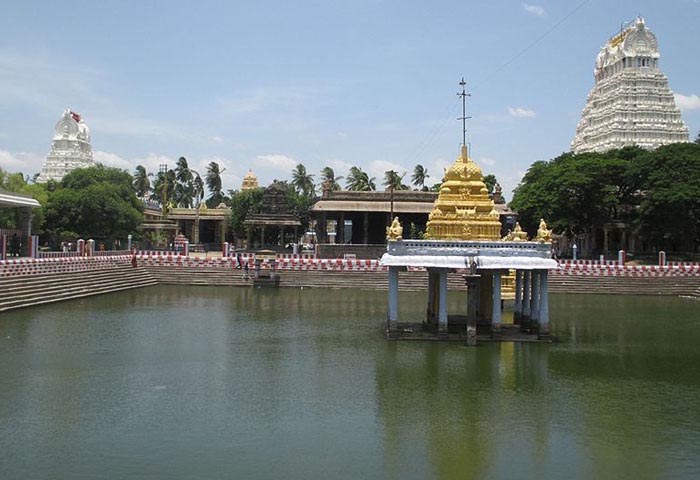Varadaraja Perumal Temple

Information of Varadaraja Perumal Temple, Kanchipuram, Tamil Nadu
The Varadaraja Perumal Temple is also alternatively known as Attiyuran or Hastagiri and is dedicated to the revered popular Hindu god Lord Vishnu. The temple is situated in the sacred city, Kanchipuram in the state of Tamil Nadu. This particular temple is regarded to be amongst the Divya Desams or rather to be among the various 108 temples of Lord Vishnu. The Alwars or the twelve eminent poet saints are supposed to have paid a visit to these 108 temples of Vishnu.
Varadaraja Perumal Temple Religious Significance
The Varadaraja Perumal Temple is considered to be quite significant owing to the belief that a prominent and legendary Hindu researcher named Ramanuja related to Vaishnava philosophy that is Visisht Advaita resided in this particular temple. The mentioned temple together with Kamakshi Amman Temple and Ekambareswarar Temple of Kanchipuram is commonly referred to as Mumurtivasam which means the home of trio. Among all the Divya Desams, the Varadaraja Perumal temple of Kanchipuram is acknowledged as the "Perumal Koli" as it is supposed to be amongst the most holy places for the followers of Vishnu or Vaishnavites. The Hastigiri name is related with regard to the alliance relating to Gajendra moksham and even from the fable that Airavatam, Indra's elephant holds the representation of Lord Vishnu in the appearance of a mountain. The Attiyurar name materializes from the custom which relates to the fact that the actual representation of Varadaraja Perumal in this temple was made out from Attimaram. Worship of the ancient wooden image is performed for a period of ten long days in every forty years. The idol of the presiding deity that is Shri Varadaraja Peruman is quite huge in size and is considered to be the second largest in terms of size in the entire South India.
Varadaraja Perumal Temple Mythology & History
According to the legends, it is believed that Lord Indra, the sovereign of the divine gods and goddesses had put in the golden as well as the silver lizards after being set free from the malediction of Goddess Saraswati. It needs to be mentioned in this regard that the lizards were identified to be the eyewitness of the tribulation. Lord Brahma had once carried out a yagna, a typical form of Hindu ritual in relation to temple worship in the place and which was predicted to have been washed down by the rapid flowing river called Vedavathi. In order to stop the water flow, Lord Vishnu laid down flat and this is how the ritual was performed without any hindrance. Lord Vishnu appeared with the brilliance equivalent to thousand Suns in the form of Devarajaswamy and resided here since then permanently.
Varadaraja Perumal Temple Architectural Significance
The temple has been built according to the Dravidian architectural pattern. The temple was actually constructed by the Chola kings in the year 1053 and was later extended at the reigning time of the eminent Chola kings Vikrama Chola and Kulottunga Chola I within the period 1075 to 1135. During the fourteenth century, an additional wall accompanied with an entrance tower was constructed by the other Chola kings. The significant aspects regarding the temple architecture are the striking lizards that are gold plated etched on top of the chamber. The temple occupies a whopping area of about 23 acres which is quite huge and the architecture of the temple stands testimony to the brilliant skills of the olden Vishwakarma Sthapathis. The temple houses 32 different places of worship, halls with 389 pillars, 19 vimanas and a few sacred tanks which are situated outside of the temple complex.
- Andhra Pradesh Temples
- Assam Temples
- Bihar Temples
- New Delhi Temples
- Goa Temples
- Gujarat Temples
- Jammu and Kashmir Temples
- Karnataka Temples
- Kerala Temples
- Madhya Pradesh Temples
- Maharashtra Temples
- Odisha Temples
- Punjab Temples
- Rajasthan Temples
- Sikkim Temples
- Tamil Nadu Temples
- Telangana Temples
- Uttar Pradesh Temples
- Uttarakhand Temples
- West Bengal Temples